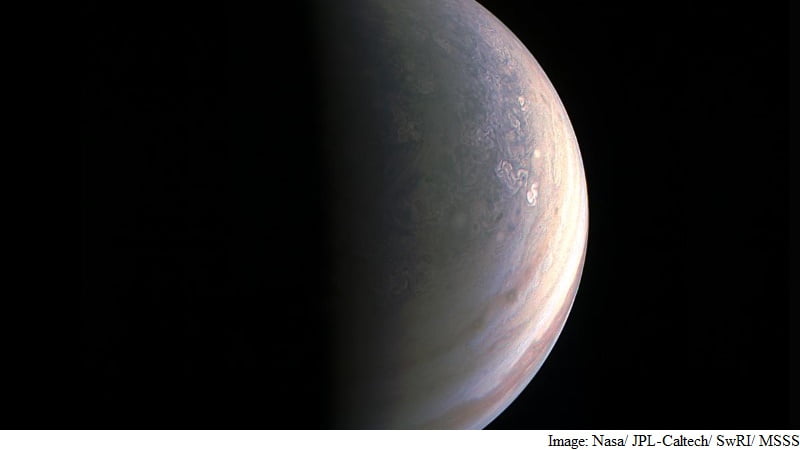
HIGHLIGHTS
This will be humanity’s first up-close view of the gigantic feature
Juno will dive in to see how deep the roots of this storm go
The spacecraft will pass about 9,000 km above the Giant Red Spot clouds
NASA has said its Juno spacecraft will pass directly over Jupiter’s Great Red Spot, the gas giant’s iconic, 16,000-km wide storm, on July 10.
This will be humanity’s first up-close and personal view of the gigantic feature – a storm monitored since 1830 and possibly existing for more than 350 years.
“Jupiter’s mysterious Great Red Spot is probably the best-known feature of Jupiter,” said Scott Bolton, principal investigator of Juno from the Southwest Research Institute in San Antonio, Texas.
“This monumental storm has raged on the solar system’s biggest planet for centuries. Now, Juno and her cloud-penetrating science instruments will dive in to see how deep the roots of this storm go, and help us understand how this giant storm works and what makes it so special,” Bolton added.
The data collection of the Great Red Spot is part of Juno’s sixth science flyby over Jupiter’s mysterious cloud tops.
Perijove (the point at which an orbit comes closest to Jupiter’s centre) will be on July 10 at 9:55pm EDT (7:25am IST on July 11), NASA said.
At the time of perijove, Juno will be about 3,500 km above the planet’s cloud tops.
Eleven minutes and 33 seconds later, Juno will have covered another 39,771 km and will be directly above the coiling crimson cloud tops of Jupiter’s Great Red Spot, the US space agency said in a statement on Saturday.
The spacecraft will pass about 9,000 km above the Giant Red Spot clouds.
All eight of the spacecraft’s instruments as well as its imager, JunoCam, will be on during the flyby, NASA said.
[“Source-gadgets”]










